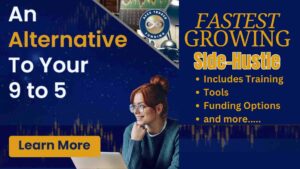Strap in, because this isn’t your run-of-the-mill leadership guide. This is a wake-up call, a challenge to everything you thought you knew about success. We’re about to flip the script and trust me. It will get controversial. So, if you’re ready to break free from the bullshit and discover the real laws of leadership, keep reading. Your journey to true high-performance leadership starts now.
The Myth of Success
Ah, success. The elusive golden goose that everyone chases but few ever catch. We’ve been sold a bill of goods about what it takes to achieve leadership success. It’s time to shred that bill and set the record straight. Let’s debunk some of the most pervasive myths about leadership success, shall we?
Myth #1: Hard Work Guarantees Success
We’ve all heard, “If you just work hard enough, you’ll succeed.” Newsflash: If hard work alone guaranteed success, every construction worker and nurse would be a billionaire. Hard work is essential, but it’s not the magic bullet. It’s like thinking you can bake a cake with just flour—good luck with that, mate. Hard work must be intelligent, strategic, and aligned with a vision. Otherwise, you’re just spinning your wheels and burning out.
“Success usually comes to those who are too busy to be looking for it.” — Henry David Thoreau
Myth #2: Leaders Must Always Have the Answers
Let’s get real here—no one has all the answers. Not even those self-proclaimed gurus who charge a fortune for their “wisdom.” The myth that leaders must always have the answers is pure, unadulterated BS. Great leaders know that they don’t know everything and surround themselves with people who complement their weaknesses. They ask questions, listen, and adapt. Pretending to have all the answers is a one-way ticket to failure.
“The greatest leader is not necessarily the one who does the greatest things. He is the one that gets the people to do the greatest things.” — Ronald Reagan
Myth #3: Leadership Is About Command and Control
The old notion that leadership is about barking orders and keeping people in line is as outdated as dial-up internet. Leadership isn’t about being a tyrant but inspiring and empowering your team. It’s about creating an environment where people feel valued and motivated to give their best. If you think being a leader means wielding a big stick, you will end up with a beaten-down, disengaged team.
“The art of leadership is saying no, not saying yes. It is very easy to say yes.” — Tony Blair
Myth #4: Success Is a Solo Journey
This is a big one. The “self-made” myth is among the most damaging lies. No one succeeds alone. Behind every successful leader is a network of supporters, mentors, and collaborators. Thinking you can go it alone is not only arrogant but also foolish. Real success comes from leveraging relationships and building a strong support system. It’s about knowing when to ask for help and being humble enough to accept it.
“Surround yourself with only people who are going to lift you higher.” — Oprah Winfrey
Myth #5: Money Equals Success
Here’s a controversial one: Money isn’t the ultimate measure of success. Shocking, right? Now, don’t get me wrong—money is important. It provides freedom and opportunities. But you’re missing the bigger picture if you define your success solely by the number of zeros in your bank account. True success is about fulfillment, impact, and leaving a legacy. It’s about making a difference and finding joy in what you do. If you’re chasing money for its own sake, you’ll end up rich but empty.
“Success is not the key to happiness. Happiness is the key to success. If you love what you are doing, you will be successful.” — Albert Schweitzer
RAMS Framework Overview
Alright, you’ve just been hit with the brutal truth about the myths of leadership success. Now, it’s time to rebuild your understanding with something solid that works. Enter the RAMS Framework—your new best friend in the quest for authentic, high-performance leadership. Let’s break it down, piece by piece, and have fun while at it.
R is for Results
Let’s face it: no one cares about your effort if it doesn’t lead to results. It’s like hitting the gym daily but still not fitting into those jeans. Results are what matter in leadership. But here’s the kicker—results are not just about the bottom line. They encompass everything from financial performance to team morale, personal growth, and company culture.
Think of results as the delicious cake that comes out of the oven. You need the right mix of ingredients and the correct baking time. Focus on clear, measurable outcomes in every aspect of your leadership. Because your effort should translate into tangible, positive changes.
A is for Attitude
You can be the smartest person in the room, but no one will follow you if you’re a jerk. Attitude is the secret sauce that makes the whole leadership dish palatable. It’s about showing up with a positive, can-do mindset, even when the chips are down.
Here’s a little humor: think of attitude as your leadership underwear. It’s not something everyone sees, but if it’s dirty or uncomfortable, it will mess up your whole day. Keep it clean, fresh, and supportive. A great attitude attracts followers, inspires loyalty, and sets the tone for your organization.
M is for Mastery
Mastery is all about being the Yoda of your field. It’s not just knowing your stuff; it’s owning, living, and breathing. Leaders who strive for mastery are constantly learning, evolving, and pushing the boundaries of their expertise.
But let’s not take ourselves too seriously—mastery doesn’t mean you’re a know-it-all. It’s about having the humility to acknowledge there’s always more to learn. Picture this: you’re at a karaoke bar and nailed that impossibly high note in “Bohemian Rhapsody.” That’s mastery- all wrapped together—confidence, skill, and a bit of flair. Aim to be that rockstar in your leadership journey.
S is for Systems
And now we get to systems—the unsung hero of effective leadership. Systems are the structures and processes that keep everything running smoothly. Think of systems as the backstage crew at a concert. They’re not in the spotlight, but the show would fall apart without them.
Having robust systems in place means you can focus on what you do best—leading—without getting bogged down in the nitty-gritty. It’s about creating repeatable processes that ensure consistency and efficiency. Remember, a well-oiled machine runs better and lasts longer. Get your systems in order, and watch your leadership impact soar.
Real-Life Success Stories
Nothing brings the RAMS Framework to life like real-world examples of individuals who have transformed their leadership and lives by embracing this revolutionary approach. Let’s dive into some inspiring success stories that showcase the power of Results, Attitude, Mastery, and Systems.
Alexi Silance: From Pain to Purpose
Alexi Silance struggled with the direction of his business and life. He felt trapped in a cycle of hard work that yielded minimal results. After engaging with the RAMS Framework, Alexi found a new sense of purpose. He realized that aligning his efforts with clear, measurable outcomes (Results) and maintaining a positive, resilient mindset (Attitude) was key. Alexi’s journey is a testament to how shifting focus from mere effort to strategic outcomes can transform a business.
Catharine T. Pearce: Elevating Life and Business
Catharine T. Pearce had reached a plateau in her career. Despite her best efforts, she wasn’t seeing the growth she desired. Through coaching sessions emphasizing the RAMS Framework, Catharine learned to leverage her unique strengths and set up effective systems to streamline her processes. The result? She significantly boosted her business performance and a renewed passion for her work. Catharine’s story highlights the importance of Mastery and Systems in achieving sustained success.
Lee Van Dusen: A Fresh Perspective on Possibilities
Lee Van Dusen was stuck in a rut, unsure how to move forward. Working with the RAMS Framework, Lee gained a fresh perspective on his potential. He unlocked new growth opportunities by focusing on Results and cultivating a positive Attitude. Lee’s story illustrates how a change in mindset and a focus on clear goals can open doors to new possibilities.
Ana M: Transforming Businesses with Proven Strategies
Ana M wanted to take her business to the next level but didn’t know where to start. With the RAMS Framework, she implemented practical, actionable steps aligned with her business goals. Ana achieved tremendous business growth by mastering her craft and setting up robust systems. Her story underscores the power of combining Mastery with effective Systems to drive success.
Gerard Butler: Inspiring Growth and Innovation
Gerard Butler faced challenges in inspiring his team and fostering innovation. The RAMS Framework helped him develop a leadership style that encouraged growth and creativity. By mastering his leadership skills and implementing practical Systems, Gerard transformed his Mindset and drove innovation within his organization. His story is a powerful example of how the RAMS Framework can lead to groundbreaking success.
Ashika Prakash: Embracing Vulnerability and Growth
Ashika Prakash struggled with confidence and vulnerability. Through coaching with the RAMS Framework, she learned to embrace her vulnerabilities and turn them into strengths. By focusing on personal Mastery and maintaining a supportive Attitude, Ashika found the confidence to push her boundaries and achieve her goals. Her journey highlights the importance of self-awareness and continuous growth in leadership.
The Controversial Side of the Laws of Leadership
Let’s cut through the crap and talk about the real deal—the controversial aspects of the so-called “laws” of leadership. Buckle up because this is where we get brutally honest and smash through the sugar-coated nonsense holding you back.
Traditional Leadership is Dead
First off, let’s bury an old friend: traditional leadership. The command-and-control model is as dead as disco. If you’re still trying to lead with an iron fist, you’re not a leader but a relic. True leadership today is about empathy, empowerment, and collaboration. The days of the tyrannical boss are over, and good riddance. Leadership is no longer about exerting power over people; it’s about inspiring and enabling them to achieve their best.
“The function of leadership is to produce more leaders, not more followers.” — Ralph Nader
The Hustle Culture Lie
We’ve all been bombarded with the glorification of hustle culture—work 24/7, sleep when you’re dead, and grind until you drop. What a load of bull. This toxic mindset leads to burnout, mental health issues, and a complete lack of balance. The truth? Success is not about how many hours you clock in; it’s about the quality and impact of those hours. Smart, strategic work trumps endless grind every time. It’s time to ditch the hustle and embrace a balanced approach that values well-being as much as productivity.
“Work smarter, not harder.” — Scrooge McDuck
Vulnerability is Strength, Not Weakness
Here’s a kicker for you: vulnerability is not a weakness. It’s a superpower. Leaders who show vulnerability—who admit their mistakes, share their fears, and ask for help—are not weak but authentic and relatable. This flies in the face of the macho, stoic leader image that’s been idolized for decades. Guess what? People are drawn to authenticity. You build trust and foster deeper connections with your team by showing your human side.
“Vulnerability is the birthplace of innovation, creativity, and change.” — Brené Brown
Ditch the Perfectionism
Perfectionism is another insidious myth. The idea that you must be perfect to be a great leader is a destructive lie. Perfectionism leads to procrastination, stress, and a fear of failure. Real leaders understand that done is better than perfect. They take action, learn from their mistakes, and continuously improve. Perfection is an illusion; progress is real. Aim for progress, not perfection, and watch your leadership effectiveness soar.
“Have no fear of perfection—you’ll never reach it.” — Salvador Dalí
Sacrificing Personal Life for Success
Another controversial truth: sacrificing your personal life for professional success is not noble; it’s stupid. The myth that you must choose between a successful career and a fulfilling personal life is a false dichotomy. Great leaders know how to balance both. They set boundaries, prioritize self-care, and ensure they have time for family, friends, and personal passions. This balance is not just desirable; it’s essential for sustained success and happiness.
“Balance is not better time management, but better boundary management. Balance means making choices and enjoying those choices.” — Betsy Jacobson
The Myth of the Self-Made Leader
The self-made leader is a myth that needs to be busted. No one makes it to the top alone. Behind every successful leader is a network of mentors, advisors, and a supportive team. The idea of the lone wolf leader is unrealistic and detrimental. Collaboration, networking, and seeking support are critical components of effective leadership. Acknowledging the contributions of others doesn’t diminish your success; it amplifies it.
“Alone we can do so little; together we can do so much.” — Helen Keller
Actionable Steps for the Reader
Alright, you’ve stuck with me through the myths, the framework, the success stories, and the controversy. Now, it’s time to get down to business with some practical steps you can take to transform your leadership style and skyrocket your success. Here are seven actionable steps that will set you on the right path:
- Set Clear, Measurable Goals
Results matter, but vague aspirations won’t get you there. Define clear, specific goals for yourself and your team. Make them measurable so you can track progress and adjust as needed. Use SMART criteria (Specific, Measurable, Achievable, Relevant, Time-bound) to ensure your goals are actionable and attainable.
Example: Instead of saying, “Increase sales,” set a goal like, “Increase sales by 20% in the next quarter by expanding our online marketing efforts.”
- Cultivate a Positive Mind State
Your attitude sets the tone for your team. Cultivate a positive, resilient mind state that inspires and motivates those around you. Practice gratitude, focus on solutions rather than problems, and maintain a growth mindset. This doesn’t mean ignoring challenges but approaching them with a can-do attitude.
Example: Start each day by listing three things you’re grateful for and share a positive affirmation or motivational quote with your team.
- Invest in Continuous Learning
Mastery is a journey, not a destination. Commit to lifelong learning and self-improvement. Attend workshops, read books, and seek out mentors who can help you grow. Encourage your team to do the same and create a culture of continuous development.
Example: Set aside one hour each week for personal development, whether it’s reading a leadership book, taking an online course, or attending a webinar.
- Build Robust Systems
Effective systems are the backbone of high-performing teams. Develop and implement processes that streamline operations, ensure consistency, and free up your time for strategic thinking. Regularly review and refine these systems to keep them efficient and relevant.
Example: Implement a project management tool like Asana or Trello to keep track of tasks, deadlines, and team responsibilities.
- Embrace Vulnerability
Show your human side. Admit when you don’t have all the answers, ask for feedback, and be open about your challenges. This builds trust and fosters a culture of honesty and collaboration. Remember, vulnerability is a strength, not a weakness.
Example: In your next team meeting, share a recent mistake and what you learned. Encourage team members to do the same.
- Balance Work and Personal Life
Prioritize your well-being and set boundaries to ensure a healthy work-life balance. This isn’t just about taking time off; it’s about being fully present in both your professional and personal life. Model this behavior for your team to encourage them to do the same.
Example: Establish “no-work” zones, such as no emails after 7 PM or no Friday meetings. Stick to these boundaries to recharge and maintain productivity.
- Foster Collaboration and Support
Recognize that success is a team effort. Build a strong support network of mentors, advisors, and peers. Encourage collaboration and open communication within your team. Celebrate successes together and support each other through challenges.
Example: Schedule regular team-building activities, whether a monthly brainstorming session, a casual team lunch, or a collaborative project outside of normal work duties.
Conclusion
You’ve now embarked on a journey that challenges everything you thought you knew about leadership. We’ve debunked the myths, introduced you to the transformative RAMS Framework, shared inspiring success stories, and highlighted the controversial truths most shy away from. The key takeaway is that success isn’t about blind hard work, perfectionism, or going it alone. It’s about achieving results, maintaining a positive attitude, mastering your craft, and building practical systems.
Today’s Leadership requires a bold approach that embraces vulnerability, prioritizes balance, and fosters collaboration. The RAMS Framework offers a practical and powerful way to redefine your leadership style and drive meaningful success.
Now, it’s time to take action. Don’t let these insights sit idle; implement them and watch your leadership and organization transform. Remember, the journey to high-performance leadership is ongoing, but with the RAMS Framework, you’re equipped with the tools to navigate it successfully.
Call to Action: Embark on Your Leadership Adventure
Are you ready to shatter the myths and embrace the fundamental laws of leadership? Take the first step towards transforming your leadership style and achieving unparalleled success. I invite you to join me for a business consultation named “The Adventure Call.”
During this personalized session, we’ll explore your leadership challenges, explore the RAMS Framework in action, and chart a course for your unique journey to high performance. This is your opportunity to gain valuable insights, receive expert guidance, and make impactful changes.
Don’t wait. Your adventure in leadership excellence starts now. Click the link below to schedule your call with me, and let’s embark on this transformative journey together.
Schedule Your Adventure Call with Baz for RAMS Coaching Insights
Get ready to redefine what it means to be a leader. The time for change is now. Let’s make it happen.





-6692a3f7b8b66-1200x675.jpg)



-6664d835f1c3e-1200x675.jpg)

-664f667ae06ca-1200x675.jpg)